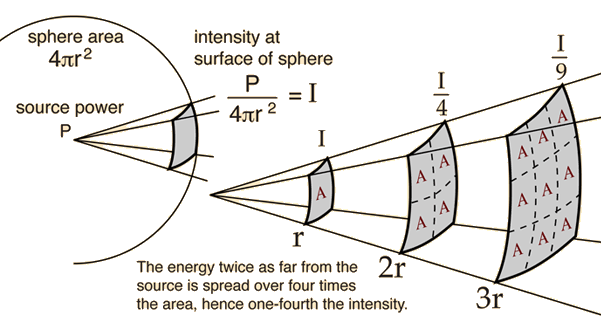Inverse Square Law, Sound
The sound intensity from a point source of sound will obey the inverse square law if there are no reflections or reverberation. A plot of this intensity drop shows that it drops off rapidly.

| Calculation | Intensity ratios | Measurement example |
| Other examples of inverse square law behavior: | Gravity | Electric |
| Radiation | Light |
Sound level measurement
Auditorium acoustics
| HyperPhysics***** Sound | R Nave |
